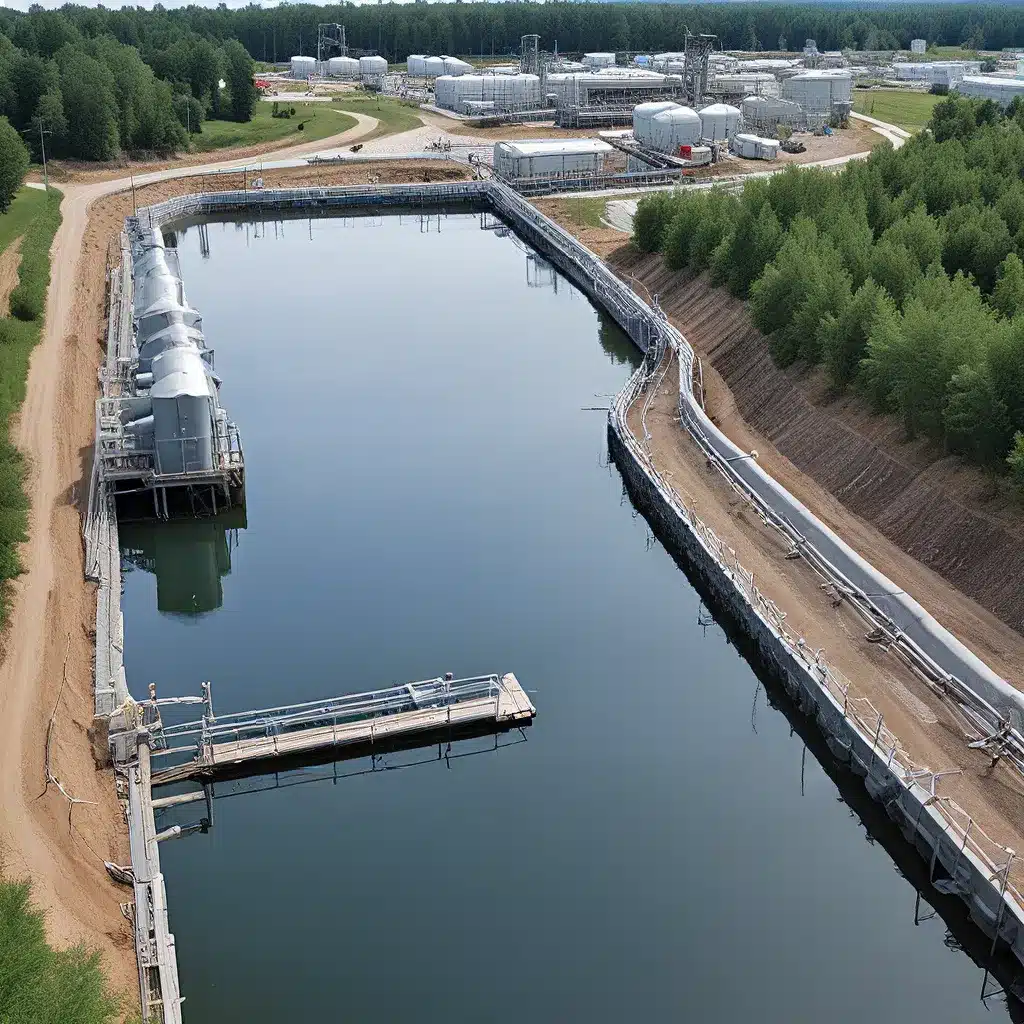
Empowering Water Treatment Professionals: Strategies for Enhancing Environmental Impact
Unlocking the Potential of Sustainable Water Treatment
As a water treatment professional, my mission is not just to ensure clean, safe water – it’s to champion environmental stewardship and drive positive change in our industry. Too often, we get caught up in the day-to-day grind, losing sight of the bigger picture. But I’m here to tell you that we have the power to make a real difference – if we’re willing to think outside the box.
You see, the traditional approaches to water treatment can be pretty resource-intensive and downright harmful to the environment. The mining industry is a prime example – despite technological advancements, it’s still a major culprit when it comes to environmental degradation. As Megan R Nichols points out, mining operations can wreak havoc on the land, water, and air, leaving a lasting impact that can linger for decades.
But here’s the thing – we don’t have to resign ourselves to this fate. There are innovative, eco-friendly solutions at our fingertips, just waiting to be implemented. And as water treatment professionals, we’re uniquely positioned to spearhead this transformation.
Embracing Sustainable Practices
One of the most promising strategies is to adopt low-impact mining techniques, like in-situ leaching. Instead of the traditional open-pit or underground methods that can devastate the landscape, these alternative approaches significantly reduce surface disturbance and minimize the amount of material that needs to be moved and backfilled.
But it’s not just about the mining process itself – it’s also about what happens to the waste. As Nichols explains, “For almost every category of mining waste, there are at least one or two ways to reuse that waste on- or off-site.” From using waste rocks for on-site construction to treating and reusing mine water for various applications, there are myriad opportunities to minimize our environmental footprint.
And let’s not forget about the equipment we use. By transitioning to battery-powered, eco-friendly alternatives, we can dramatically reduce the carbon emissions associated with our operations. Nichols highlights the example of Swedish mining equipment manufacturer Epiroc, which plans to be 100% electric within the next few years – a move that could pave the way for even greater sustainability in our industry.
Restoring the Land
But the story doesn’t end there. Even after mining operations have ceased, the land can still be left in a state of disrepair, vulnerable to soil erosion and inhospitable to plant and animal life. That’s where land rehabilitation techniques come into play.
By using biosolids to replenish depleted topsoil and employing other restorative measures, we can actually revive these damaged areas and help them regain their natural productivity. In fact, some mining companies, like Alcoa in Australia, have gone so far as to implement large-scale reforestation schemes, actively working to restore the original ecosystem.
It’s a testament to what’s possible when we approach our work with a genuine commitment to sustainability. And the best part? These strategies don’t just benefit the environment – they can also boost the bottom line, making our operations more efficient and cost-effective in the long run.
Embracing the Challenge
I know what you’re thinking – this all sounds great, but it’s also a lot of work. And you’re not wrong. Transforming an entire industry takes time, effort, and a willingness to challenge the status quo. But I firmly believe that the water treatment professionals of today have what it takes to lead the charge.
After all, we’re no strangers to complex challenges. We’ve honed our problem-solving skills, our attention to detail, and our commitment to quality. And now, it’s time to apply those same qualities to the task of environmental stewardship.
Sure, there may be obstacles along the way. Illegal mining, for instance, remains a significant issue that requires vigilance and collaboration across the industry. As Nichols notes, experts estimate that around 14,000 people are currently involved in illegal mining in South Africa alone – a problem that demands a comprehensive, coordinated response.
But I’m confident that, together, we can overcome these challenges. By staying informed, advocating for change, and leading by example, we can inspire others to follow in our footsteps. And who knows? Maybe one day, the Inland Waters Inc. name will become synonymous with environmental excellence, a beacon for the industry and a true testament to the power of sustainable water treatment.
The Future is Ours to Shape
So, what are we waiting for? The time is now to embrace the transformative potential of sustainable water treatment practices. Whether it’s implementing low-impact mining techniques, finding innovative ways to reuse waste, or restoring damaged land, the opportunities are endless.
And let’s not forget the broader implications of our work. By reducing our environmental impact, we’re not just protecting our local ecosystems – we’re contributing to the global effort to address climate change and safeguard our planet for future generations. It’s a responsibility that we should take immense pride in.
So, let’s roll up our sleeves and get to work. The future of water treatment is ours to shape, and I can’t wait to see what we’ll accomplish. Who knows – maybe one day, our efforts will inspire a whole new generation of water treatment professionals to follow in our footsteps, carrying on the legacy of environmental stewardship that we’ve helped to create. The possibilities are endless, my friends. Let’s get started!


